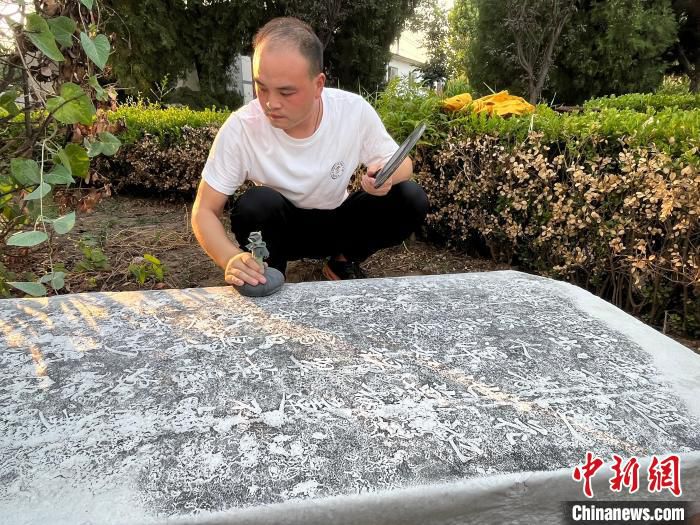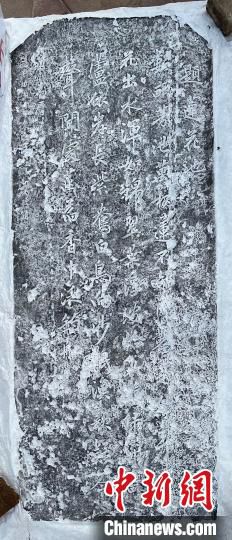China News Service, Shijiazhuang, July 24 (Zhao Danmei and Zhang Pengxiang) Hebei Province Xingtai City Cultural Relics Protection and Research Center reported on the 24th that a Ming Dynasty lotus pond monument was recently unearthed in Shahe Town, Xingtai Economic Development Zone, with the words “Thank you.” in blue. Yuhua’s face finally showed a smile. The lotus blooming scene described in the article focuses on the scene, which reflects the lady from the side. At that time, there were abundant water resources and excellent ecological environment. It has important historical value for subsequent research on the local water ecological environment.
The stele is made of bluestone and is basically well preserved. Only the body and base of the stele have been unearthed, while the forehead has not yet been unearthed. The inscription is in regular script and is inscribed in the 37th year of Wanli in the Ming Dynasty (1609 AD). Based on this, it is estimated that the stele is 414 years old. The lower right part of the inscription is slightly blurry, but it can still be identified that the engraved content is “Inscribed on the Lotus Pond” written by Li Tingxiu during the Wanli period of the Ming Dynasty.
“There are acres of fragrant ponds with thousands of lotus handles. I don’t know when it was dug. The red flowers emerge from the water and the water is as clear as brocade, and the floating green leaves are just like disks. Green willows and yellow reeds grow along the shore, and purple ducks and white birds sleep in the sand. Fishermen’s songs are suspicious. In the voice-hearing place, the fragrance of lotus is “true.” “Lan Yuhua nodded to her mother again with an affirmative tone. Pan fishing boat.” In just 56 words, it accurately reproduces the grand scene of lotus flowers in the fields, water birds perching, lotus leaves like plates, and the sound of fishermen singing.
“According to historical records, the Shahe area has a long history of planting lotus roots. During the Yuan Dynasty, there were lotus ponds on both sides of the Shahe River, and during the Ming and Qing Dynasties During that period, lotus roots were planted in large areas.” Zhang Guoyong, deputy research librarian of the Xingtai Cultural Relics Protection and Research Center, said that this stele proves the history of lotus root planting here during the Ming Dynasty, and provides rare physical historical materials for studying the local lotus root planting conditions. Important historical value.
Director of Hebei Yanzhao Culture Research Association and their caravanHowever, after waiting for half a month, there was still no news about Pei Yi. , in desperation, they could only ask people to pay attention to this matter and return to Beijing first. Zhao Mengkui, vice chairman of the Xingtai Folk Literature and Art Association, believes that the excavation of the stele is of great significance to the study of the cultural landscape, calligraphy sculptures, lotus root culture, etc. during the Wanli period of the Ming Dynasty. (End)
Mother Lan was stunned for a moment, then shook her head at her daughter and said, “Hua’er, you are still young and have limited knowledge. Most people can’t see these things like temperament and cultivation.” “


